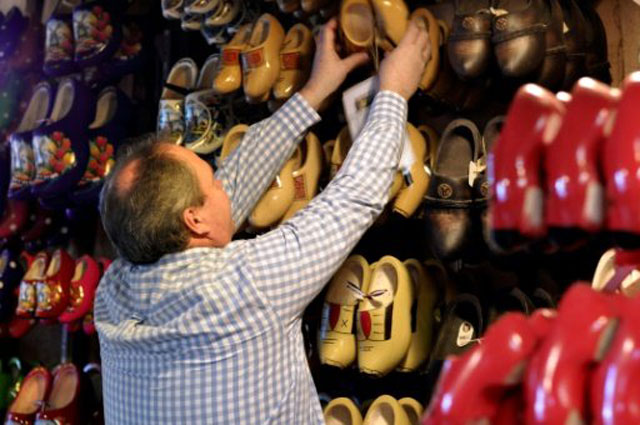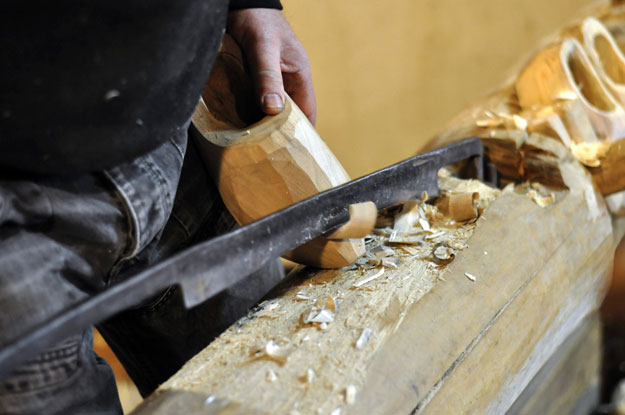
Expertly wielding a long metal spoon-like tool, Nicole van Aarle rhythmically hewed away at a piece of willow, the shavings falling at her feet, the walls of her workshop in the southern Dutch town of Aarle-Rixtel adorned with clogs of all shapes and sizes.
Expansion : Ayubia motel to get more rooms
"I work when I can. In the evenings, or after dropping the kids off at school, at weekends. But I can't make a living just from making clogs," said this former soldier, who is proud of being a fifth-generation clog-maker.
At 40, she is one of the country's youngest clog-makers and represents the future of a trade in which most craftsmen are already reaching retirement age. It's a "very worrying situation," said Pieter van Rooij, from the Dutch Heritage Centre.
"Preserving this craft is long overdue, to ensure that it is handed down to future generations. Otherwise we will lose the know-how of how to make this Dutch icon."
Even though clogs have been made for centuries across many countries such as in France and Britain, they have become as synonymous with this lowlands country of 17 million people as tulips and windmills.
Up until World War II, clogs were the footwear of choice for most Dutch people.
Made from a single piece of wood, they are "warm, dry and not very expensive," said Jack van der Voort, president of the Dutch Clog Monument association. "And you can adapt the shape of the shoe to your job, to the ground on which you work, to the region."
 PHOTO: AFP
PHOTO: AFPBut the tradition "is almost dead," he told AFP, calculating that only about 40 clog-makers remain in Europe, of which 30 live in The Netherlands.
"It's like chips in Belgium or German sausage, we have to preserve it," said Van Aarle.
"Of course everyone wants to eat chips. But clogs are difficult to walk in, so it's more complicated."
Since the end of the war, the Dutch have increasingly donned rubber or leather footwear and clogs have become a sign of a rural past.
Van der Voort and Van Aarle have started to organise markets, festivals and even a national clog-making championship in their passion to keep their handicraft alive.
"The interest is there. People are beginning to become interested in their traditions again," said Van der Voort. And new uses are coming to the fore.
New attraction: Sound, light show in capital soon
"Young people going to music festivals are sometimes wearing clogs. They protect them from the mud, they're easy to take off outside a tent and no-one steps on your toes," laughed Van Aarle.
For her and her father, Harrie, clogs are an essential part of Dutch identity. "From my first steps until I was about 15 years ago, I wore clogs," she said.
"I grew up watching my father making clogs and I wanted to learn when I was about 18 or 19."
At first her dad refused, seeing no point in teaching his daughter a craft with no future. But he eventually gave in, in face of her persistence.
Now, the 66-year-old visits his daughter's workshop daily, as she tries to give a modern facelift to a craft seen by most Dutch as old-fashioned.
"We try to be creative with our designs, by adding heels, or engravings, creating clogs for occasions like births or birthdays... there's a lot that can be done" to boost the hand-made market.
Out of the 300,000 clogs made in the country every year either by machine or hand, about a third are bought by tourists, said Van der Voort. Some end up as garden decorations, others as fridge magnets.
Van Aarle hopes her two sons may one day take over the family business. "That would obviously make me very proud. But it's a difficult job and I would never force them."

















COMMENTS
Comments are moderated and generally will be posted if they are on-topic and not abusive.
For more information, please see our Comments FAQ